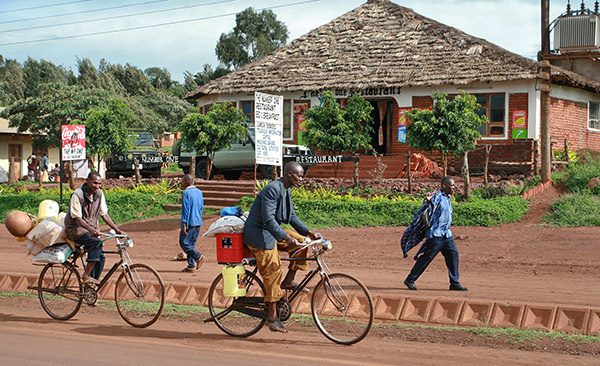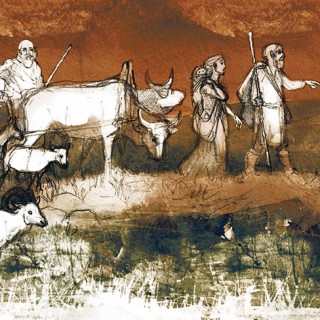The connection between urban and rural
In Africa, the predicted rate of urbanisation is overestimated. In India, the speed of urbanisation is underestimated. Researchers at IIED – the International Institute for Environment and Development – in the UK discovered this when reviewing the data on which the predictions are based.“There are many myths concerning urbanisation”, says Agnes Andersson Djurfeldt, human geographer at Lund University.
The United Nations Department of Social and Economic Affairs, and their database World Urbanization Prospects are behind these global estimates of urbanisation speed.
“The database uses population statistics from all the countries in the world, but it is not always reliable. People move for different reasons. They might be seasonal workers and farmers moving to cities on a temporary basis according to the growing seasons. Some countries have not taken any census for decades, for instance Angola, which stopped counting its population in the 1970s. The predictions for these countries are instead based on previous census data”, says Agnes Andersson Djurfeldt.
IT WAS AROUND 2010 when researchers began to realise that the information in the UN database was not entirely reliable. This was also confirmed by measurements retrieved from satellites over Africa and Asia.
In Africa, decision-makers have had a tendency to interpret urbanisation as mainly driven by migration. However, cities expand due to natural growth as well. Families who move to urban areas continue to have children, and these children have a better chance of survival than those living in rural areas.
Are incorrect statistics necessarily a problem? Yes, predictions based on poor information leads to governments making erroneous decisions, to meet the supposed speed of urbanisation. Resources are allocated to more densely populated areas, when they would perhaps be better spent in rural communities. Meanwhile, other types of efforts are needed if urbanisation is driven by natural growth rather than migration.
THERE ARE ALSO POLITICAL MOTIVES for a country not to count its population.
“Countries do not always want to admit to having an increasing population. Nigeria is a well-known example, where the federal government refrains from counting people to avoid conflicts between groups and states. Especially if they believe that some population groups have increased more than others”, says Agnes Andersson Djurfeldt.
Political motives can both increase and decrease the level of urbanisation, which has consequences in terms of which subsidies and support programmes are implemented.
The way people define urban areas also differs between, for instance, Africa and India, even if most definitions are based on functional aspects, e.g. access to running water, electricity, telephony and schools, as well as statistical thresholds concerning population density. India is known for its strict definition of urban areas: for it to be considered urban, three quarters of the male population must earn their money in ways other than farming.
“African urbanisation is different from Asian urbanisation”.
“Together with Srilata Sircar, who is currently writing her doctoral thesis about small cities in India, I visited places which seemed to me, as an outsider, entirely urban, but are not, as the people there support themselves through agriculture”, says Agnes Andersson Djurfeldt. “Researchers emphasise that the urban and the rural must be seen as interconnected, as people’s lives are associated with both. A clearer understanding of this would facilitate helping impoverished people. Even though the number of poor people in cities continues to rise, poverty in rural communities is not decreasing”.
Agnes Andersson Djurfeldt has reviewed the research that concerns the connection between cities and the small-scale farming in South Asia and Africa south of the Sahara. She finds that the major link between urban and rural communities has to do with whether or not, and in what way, the small-scale farming community supplies the cities with food.
IN ASIA, industrialisation is connected to rural communities through the markets for food and other products. The industrialised population needs something to eat, and people in rural communities need products that are produced in the cities. In India, for instance, you find small places that grow as a result of a local relationship with farming until they reach the point of becoming urban.
African urbanisation is different from Asian urbanisation. Rural communities are not capable of producing the amount of food needed to feed more densely populated areas, at the same time as imports of rice etc. from Asia undermines the development of small-scale farming in the short term.
“Rural areas, located alongside major roads that lead into major cities do well. Crops, such as fruit and vegetables, have relatively high profit margins. Other more remote areas are excluded”, says Agnes Andersson Djurfeldt.
The consequence of having some rural areas excluded from the urbanisation process is that the people in these areas are unable to pull themselves out of poverty.
“I have been to northern Ghana and interviewed small-scale farmers who say that all young people, and anyone else who can, disappear to more dynamic parts of the country, and this of course makes sense. I believe Africa will become even more polarised in the future”, says Agnes Andersson Djurfeldt.
Text: Bodil Malmström





